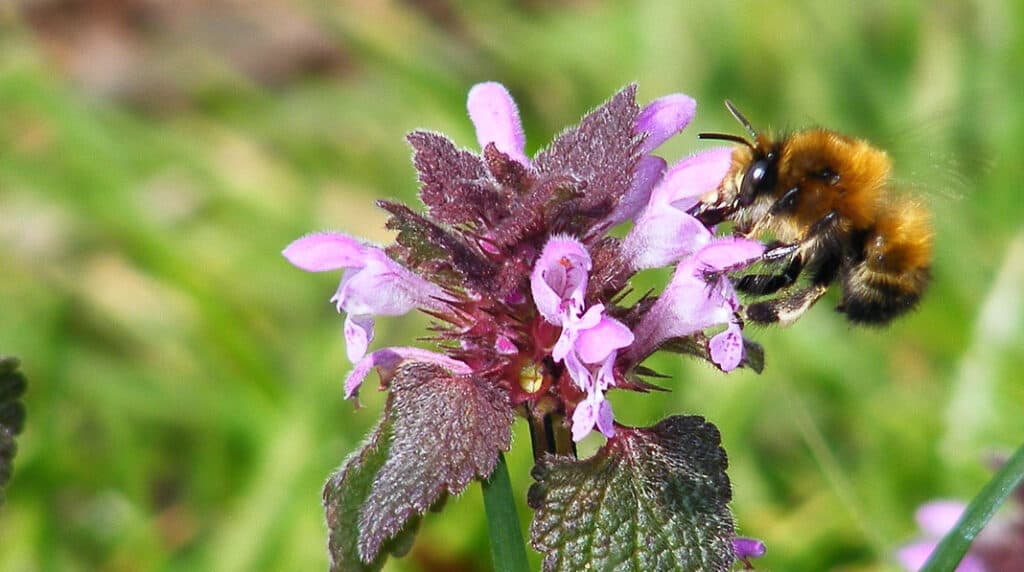They may sound like a character from a Brambly Hedge book, but Mr & Mrs hairy foot are a quintessential 20’s couple, says Jane Adams

She’s a head turner.
Orange stockinged and with eyes that match the dark velvet of her tasselled dress, she somehow has the knack of looking glamorous without being garish.
Her beau’s the same; they’re a well- matched pair. He sports a loose-fitting suit of reddish- yellow tweed and as he fusses around her, the fringe of his silky scarf ripples in the breeze. They’re the quintessential 1920s couple. Or they would be, if they weren’t bees.
But these aren’t any old bees. These are hairy-footed flower- bees, one of many harmless solitary bees that live for just a few short weeks in gardens and green spaces in Dorset.
Males appear first, in late February or March, depending on the temperature. You’ll often meet him in the garden staking his claim over pulmonaria, primroses, dead-nettles, daffodils, and cowslips, and though bumblebee sized, he has a distinctive darting, jazzed-up way of flying and high- pitched buzz. He gets
his quirky name from the long, silky ginger- brown hairs hanging from his middle legs and feet, and if you’re
in his territory, he might try to chase you away. It’s all bravado. He’s harmless, and in common with other male bees, doesn’t have a sting.
Besides chasing you and insects that stray into his patch, he will hope for a female (or two) to come and feed, which they do within a week or two. Black, but for her gingery-haired back legs, the female couldn’t look more different to the male and once mated, she’ll make a nest within the soft mortar of a wall or vertical surface of a coastal cliff.
Here she’ll leave pollen collected on her orange stockinged legs for her unborn young and, after repeating this several times in several nests, her job is done. She won’t see her progeny grow into adults. By June, she and any males will usually have died, but don’t worry, new head-turners will be back again next year.
Fact File:
Found: all over Dorset from late February/March until June. The female nests in soft mortar of walls and soft coastal cliffs.
Males: bumblebee sized. Ginger/beige-coloured hairs, cream face. Territorial. Hairy legs.
Females: bumblebee sized. Black with orange back legs Fast, darting flight. Hover in front of flowers to feed. Often rest on ground or leaves.
Favourite flowers: pulmonaria, red dead nettles, primroses, daffodils.
by Jane Adams – Naturalist. bTB Badger Vaccinator. Nature writer. Photographer. Bee Watcher.



